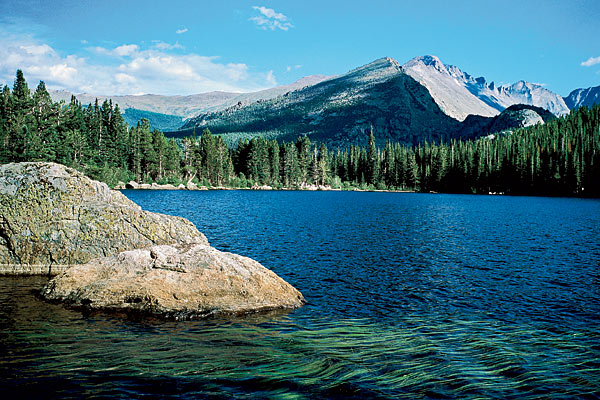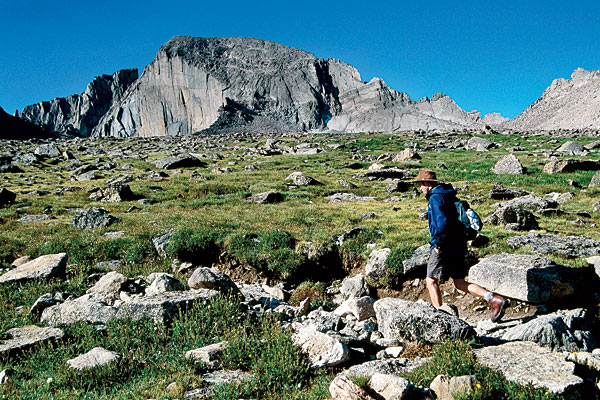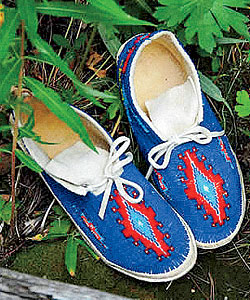As told to Nina Kokotas Hahn

OUR GUIDE, DAVID SOLZMAN: Associate professor emeritus, Univeristy of Illinois at Chicago
A geographer and the author of The Chicago River: An Illustrated History and Guide to the River and Its Waterways, Solzman, 78, has visited Rocky Mountain National Park every year since 1941.
GO NOW: August is a prime time to visit the park: Wildflowers still bloom early in the month, and daytime temperatures reach the upper 70s—although snow is always a possibility at the higher elevations.
When I was growing up in Omaha, the best day of the year was not Christmas or my birthday but the day my family jumped in the car and drove to Rocky Mountain National Park. Climbing past rolling hills that suddenly thrust up into mountainous peaks thrilled me beyond measure. I’m still a kid today: Flying into Denver, I’ve got my nose pressed against the window, waiting for those mountains to appear.
As a geographer, I constantly marvel at the remarkable variety of the park. It spans 415 square miles, traversing more than three ecosystems and straddling the Continental Divide, with elevations that skyrocket from 7,700 feet all the way up to the 14,259-foot summit of Longs Peak. It has 147 lakes (most formed by glacial retreat), and the headwaters of the Colorado River are found there. It’s also home to bighorn sheep, elk, black bears, and coyotes, not to mention hundreds of species of birds.
The most astounding feature, though, might be the alpine tundra, the high-altitude ecosystem that dominates the third of the park that sits above 10,500 feet. The air is light and cold, and the climate’s too harsh for trees, yet alpine flowers, like miniature forget-me-nots, flourish close to the ground. You can reach it by car on Trail Ridge Road, the highest continuous paved highway in North America, topping out at 12,183 feet. I like to drive it at the break of dawn, when it’s just me and the elk, or at twilight, when everybody else is coming down. Along the way, look for lakes dubbed “giant footsteps.” In some places, you’ll see four and five lakes stacked one above the other like a staircase.
The biggest surprise is always the nighttime sky. Walk out at midnight and you will practically fall down from the vertigo—the panoply of stars is that staggering.
Photograph: Holger Leue/Lonely Planet Images

On the trail to Longs Peak
DAVID SOLZMAN’S ROCKY MOUNTAIN ADDRESS BOOK
HIKE
With more than 355 miles of trails, the park offers incomparable hiking and climbing at every level—but it’s critical to acclimate to the jump in elevation first. Once you’re ready, Lily Lake (8,880 feet) is a great start: three-quarters of a mile around a nicely variegated trail. The moderate Loch Vale Trail (10,180 feet) covers three miles one way, with a waterfall en route to a stunning lake. For the ultimate climb, take on Longs Peak (14,259 feet), the park’s highest mountain. It offers a seven-mile mix of hiking and scrambling over a 5,000-foot gain. Don’t miss an early-morning drive up Trail Ridge Road (nps.gov/romo), which usually closes in October. In a matter minutes, you’ll climb 4,000 feet, through evergreen forests and vast alpine tundra, to its highest point, at 12,183 feet. Stargazing in the Rockies is remarkable on most any night, but around August 12 you can experience the peak of the Perseid meteor shower. On August 24 and 25, join the National Park Service and National Geographic’s research expedition, BioBlitz 2012, for a 24-hour inventory of species in the park and the Biodiversity Festival in Estes Park (nationalgeographic.com/explorers/projects/bioblitz).

The lobby of The Stanley Hotel
STAY
Surrounded by the park on three sides, Estes Park Center of the YMCA of the Rockies (2515 Tunnel Rd., Estes Park, 800-777-9622, ymcarockies.org; rooms from $129) is my favorite place to stay for its astounding mountain views, atmospheric cabins and lodge rooms, and huge assortment of family-friendly activities. If you like Stephen King’s The Shining, stay at The Stanley Hotel (333 Wonderview Ave., Estes Park, 800-976-1377, stanleyhotel.com; rooms from $169), which inspired the novel with its paranormal activity and just added new luxury lodge rooms. Get close to nirvana with a campsite overlooking the valley at Moraine Park (Bear Lake Rd., Rocky Mountain National Park, 877-444-6777, recreation.gov; campsites $20), where you’ll spy elk, coyotes, a winding stream, and a whole procession of flowers.
EAT AND DRINK
Start with The Egg and I (393 E. Elkhorn Ave., Estes Park, 970-586-1173, theeggandirestaurants.com) for an excellent hot breakfast or lunch. At Nepal’s Café (184 E. Elkhorn Ave., Estes Park, 970-577-7035, nepalscafe.com), cheap and tasty chicken tandoori and tikka masala are served by a charming Nepali family. For something upscale, I like the beautiful dining room and locally sourced menu at Cascades at The Stanley Hotel.

Handmade moccasins from Eagle Plume’s
SHOP
Eagle Plume’s (9853 Hwy. 7, 303-747-2861, eagleplume.com) is a trading post worth the 20-minute drive south to Allenspark to shop for arts and crafts and for the chance to see a private collection of thousands of Native American artifacts. For souveniers, visit the gift shop near the Alpine Visitor Center (open only in summer; nps.gov/romo), high in the park just off Trail Ridge Road. Find a substantial selection of books and magazines at the beloved Macdonald Book Shop (152 E. Elkhorn Ave., Estes Park, 970-586-3450, macdonaldbookshop.com). Stop by The Hiking Hut (184 E. Elkhorn Ave., Estes Park, 970-586-0708, thehikinghutinc.com) to rent or buy reasonably priced gear.
Photograph: (trail) Sally Dillon


